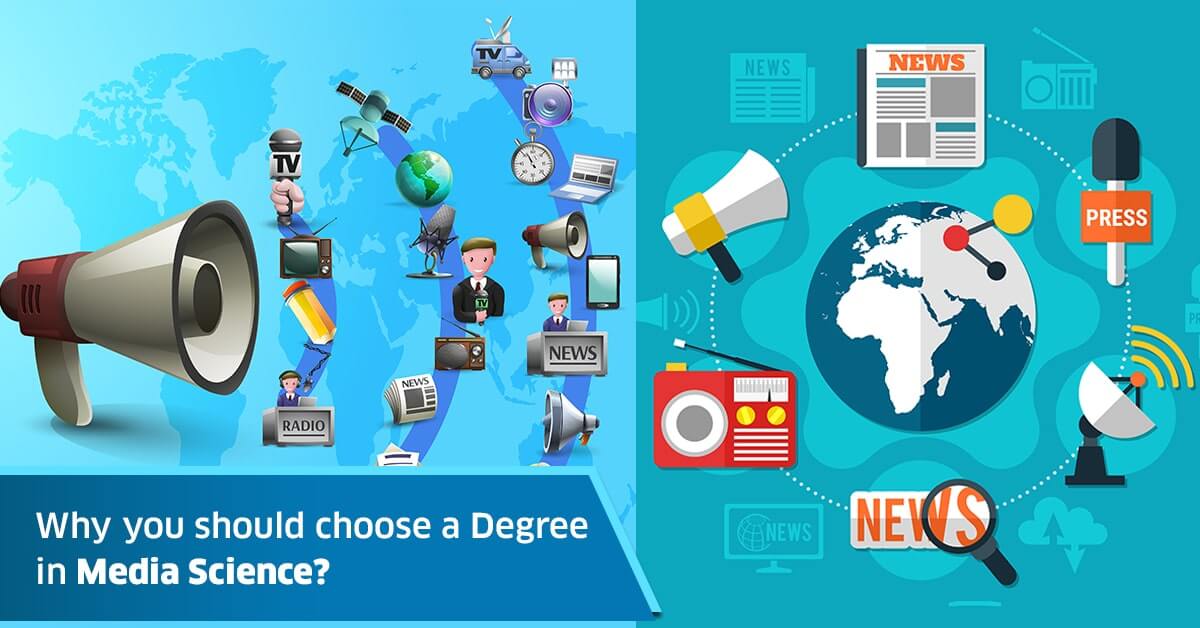Introduction to Media Sciences
What is Media Science?
Media Sciences is a fascinating field that blends creativity, technology, and communication to craft impactful content for various platforms. It covers journalism, advertising, public relations, filmmaking, graphic design, and digital media. In the modern world, where media drives societal trends and opinions, a degree in Media Sciences gives students the skills to shape narratives and create visually engaging and thought-provoking content.
Media professionals are storytellers of the digital era, bridging the gap between technology and human expression. Whether you’re interested in creating a blockbuster movie, crafting viral social media campaigns, or writing investigative reports, Media Sciences equips you with the tools to thrive in these areas.
Why Pursue a Bachelor of Media Science?
This degree is perfect for those who are curious, creative, and passionate about communication. Pursuing a Bachelor of Media Sciences opens career opportunities in dynamic industries such as film, television, advertising, and digital marketing. Unlike many conventional degrees, this program offers hands-on learning experiences, allowing students to build practical skills while nurturing their artistic abilities.
Core Components of Media Sciences Degree
Subjects Covered in Media Sciences
A Bachelor of Media Sciences is a multidisciplinary program that combines theoretical and practical knowledge. Key subjects include:
- Media History and Theories: Understanding how media evolved and its societal impact.
- Video Production: Learning camera handling, lighting, and editing techniques.
- Advertising and Marketing: Exploring branding strategies and consumer behaviour.
- Graphic Design: Mastering software like Adobe Photoshop and Illustrator.
- Media Laws and Ethics: Understanding media professionals’ legal boundaries and ethical responsibilities.
- Digital Media: Analyzing social media’s and digital marketing’s role in modern communication.
Skills You Gain During the Program
- Technical Skills: Proficiency in video editing tools, graphic design software, and animation.
- Creative Thinking: Developing unique ideas for campaigns, films, or content creation.
- Communication Skills: Enhancing your ability to convey complex ideas effectively.
- Problem-Solving: Tackling real-world challenges through innovative solutions.
- Collaboration: Working as part of a creative team to execute projects seamlessly.
Career Opportunities After Completing Bachelor of Media Sciences
Popular Job Roles for Media Graduates
Media science graduates have the flexibility to work across various domains, including:
- Content Writer/Copywriter: Crafting engaging articles, blogs, and ad scripts.
- Digital Marketer: Creating online campaigns to boost brand visibility.
- Graphic Designer: Designing visual content for websites, advertisements, and more.
- Film and Video Editor: Editing raw footage into compelling stories.
- Public Relations Officer: Managing the public image of brands or individuals.
Industries Hiring Media Sciences Professionals
- Film and Television: From directing and production to scriptwriting, the film and TV industry provides ample opportunities for media graduates.
- Advertising Agencies: Crafting impactful ad campaigns for businesses.
- News Media: Reporting and anchoring for print, television, or digital platforms.
- Tech Companies: Designing user-centric content and visuals for apps and websites.
- Freelancing: Many media graduates choose freelancing, offering services like photography, content writing, or video editing on their terms.
Comparison with Other Degree Programs
Media Sciences vs. BSCS (Bachelor of Science in Computer Science)
While Media Sciences focuses on content creation and communication, BSCS centers on software development, programming, and computational theories. BSCS graduates often pursue roles in IT and tech-related industries, whereas Media Sciences graduates excel in creative fields like advertising and filmmaking. The choice depends on whether your interests lean toward creative storytelling or technical problem-solving.
Media Sciences vs. Bachelor in Computer Science
Like BSCS, a Bachelor in Computer Science (B.Sc.) involves coding, artificial intelligence, and database management. Media Sciences, on the other hand, fosters artistic expression and multimedia production. Both degrees cater to different skill sets and career aspirations.
Top Institutes Offering Bachelor of Media Sciences in Karachi
Best Institutes for Media Sciences
Here are the leading institutions in Karachi that offer a Bachelor of Media Sciences:
- Institute of Business Administration (IBA)
- Recognized for its excellent academic standards and strong industry links.
- SZABIST (Shaheed Zulfikar Ali Bhutto Institute of Science and Technology)
- Offers a diverse program with a blend of theoretical and practical coursework.
- Indus Valley School of Art and Architecture
- Best suited for students seeking an arts-centric approach to media education.
- Aawaz Institute Of Media Science(AIMS)
- Known for its state-of-the-art facilities and focus on digital media.
- University of Karachi
- Offers an affordable program with a well-rounded curriculum.
Key Features of These Institutes
- State-of-the-art facilities, including media labs and editing suites.
- Internship opportunities with renowned media houses.
- Networking events to connect students with industry leaders.
Admission Requirements and Eligibility Criteria
General Requirements for Media Sciences
The eligibility criteria vary slightly among institutions, but common requirements include:
- A minimum of 50% marks in intermediate education (FA, FSc, or A-Levels).
- Proficiency in English, as most programs are taught in this language.
- An aptitude test and interview for shortlisted candidates.
Tips for Preparing a Strong Application
- Highlight any creative projects in your portfolio, such as short films, blogs, or photography.
- Practice for the aptitude test by improving your general knowledge and communication skills.
- Write a compelling personal statement explaining your passion for media.
Challenges and Rewards of Studying Media Sciences
Common Challenges Faced by Students
- Time Management: Balancing creative projects with academic assignments.
- Keeping Up with Technology: Media tools and platforms evolve quickly, requiring constant learning.
- Creative Pressure: Meeting high expectations in terms of originality and quality.
Why the Rewards Are Worth It
Despite the hurdles, the rewards of a career in Media Sciences are immense. You work in dynamic environments, see your creative vision come to life, and influence audiences worldwide. Additionally, the skills you develop are highly transferable, opening doors to various industries.
Is Media Sciences the Right Choice for You?
Evaluating Your Interests and Career Goals
Consider this degree if you enjoy storytelling, visual arts, and creative problem-solving. Media Sciences is particularly suitable for those who want to blend technology with artistry to communicate ideas effectively.
Exploring Alternatives in Related Fields
If Media Sciences doesn’t align with your goals, you might explore related fields like:
- Graphic Design
- Mass Communication
- Film and TV Production
- Digital Marketing
FAQs About Bachelor of Media Sciences
- How long does it take to complete a Bachelor of Media Sciences?
- Typically, it’s a 4-year program comprising 8 semesters.
- What are the job prospects for Media Sciences graduates in Pakistan?
- The rise of digital platforms has created a high demand for skilled media professionals, offering diverse opportunities.
- Is Media Science similar to Mass Communication?
- While both fields overlap, Media Sciences delves deeper into technical aspects like video production and graphic design.
- What is the average salary for a Media Sciences graduate in Pakistan?
- Entry-level salaries range from PKR 40,000 to 70,000 per month, depending on the role and organization.
- Do I need prior experience in media to study this program?
- No prior experience is necessary, but a portfolio can be advantageous.





